Exploring the world of organic gardening methods offers a pathway to cultivating a sustainable and healthy garden right in your own backyard. In today’s fast-paced world, many individuals are turning to organic gardening as a means to reduce chemical exposure, promote environmental health, and enjoy fresh, nutrient-rich produce. Whether you’re a seasoned gardener or just beginning, mastering organic gardening methods can lead to a more productive and eco-friendly gardening experience. This comprehensive guide delves into the various techniques, benefits, and considerations of organic gardening, providing valuable insights for anyone looking to embrace a greener lifestyle. From understanding the three-year rule to discovering effective methods for growing organic vegetables, this article serves as your ultimate resource for creating a thriving organic garden.
Key Takeaways
– Promotes environmental health by reducing chemical runoff and enhancing biodiversity.
– Improves food safety by minimizing exposure to synthetic chemicals.
– Enhances nutritional value with higher levels of antioxidants and nutrients in organically grown produce.
– Supports sustainability through reduced energy use and lower carbon footprint.
– Encourages soil health by avoiding synthetic fertilizers and focusing on natural processes.
– Fosters biodiversity by creating habitats for pollinators and beneficial insects.
– Natural pest control through methods like companion planting and crop rotation.
– Composting to recycle waste and enrich soil naturally.
– Adaptable practices suited to local climates and growing conditions.
– Effective techniques such as drip irrigation and mulching for efficient resource use.
Types of Organic Gardening
Organic gardening encompasses various methods and practices aimed at growing plants and crops in harmony with nature. Here are the primary types of organic gardening:
- Traditional Organic Farming :
This method relies on natural processes and materials for plant growth. Techniques include crop rotation, companion planting, and the use of organic fertilizers like compost and manure. Traditional farming emphasizes sustainability and avoids synthetic chemicals. - Heirloom Gardening :
Heirloom gardening focuses on preserving and growing heritage varieties of plants that have been passed down through generations. These plants are often more resistant to pests and diseases and have unique flavors. Many heirloom gardens also emphasize biodiversity and self-sufficiency. - Permaculture :
Permaculture is a design-based approach to organic gardening that mimics the patterns found in natural ecosystems. It focuses on creating self-reliant systems where plants, animals, and microorganisms work together to support each other. Key principles include mulching, companion planting, and water conservation. - Urban Farming :
Urban farming involves growing fruits, vegetables, and herbs in urban settings, such as rooftops, balconies, or backyard spaces. This type of gardening is particularly popular in densely populated areas and aims to promote food security and environmental awareness. - Veganic Gardening :
Veganic gardening takes organic gardening a step further by excluding all animal products, including manures and bone meal. Instead, veganic farmers rely solely on plant-based fertilizers and composting materials. - Aquaponic Gardening :
Aquaponics combines hydroponics (growing plants without soil) with aquaculture (raising fish or other aquatic organisms). This method recycles nutrients from fish waste to feed plants, creating a self-sustaining ecosystem. - Biodynamic Gardening :
Biodynamic gardening incorporates the principles of biodynamics, developed by Rudolf Steiner. It uses a combination of organic materials and spiritual practices to prepare “biodynamic preparations,” which are then applied to the land to enhance its vitality and fertility. - Community Supported Agriculture (CSA) :
CSA programs allow individuals to subscribe to shares of produce grown by local farmers. This model strengthens community bonds and supports small-scale, organic farming operations. - Gardening for Pollinators :
This type of gardening focuses on creating habitats and food sources for pollinators like bees and butterflies. Planting native flowers, herbs, and vegetables helps sustain pollinator populations, which are crucial for ecosystem health. - Sustainable Intensive Gardening :
This method involves growing high yields of crops in limited space using organic practices. Techniques include vertical gardening, succession planting, and maximizing space efficiency to produce as much as possible.
Each of these methods contributes to the broader goal of organic gardening: promoting environmental health, supporting biodiversity, and providing fresh, nutritious food while reducing reliance on synthetic inputs. By choosing a method that aligns with their specific needs, gardeners can create a thriving, eco-friendly garden space.
For more resources and guides on organic gardening techniques, visit our comprehensive gardening guides at Old Seed.
Disadvantages of Organic Gardening
While organic gardening offers numerous benefits, it also presents several drawbacks worth considering:
- Requires More Labor:** Organic gardening often demands more manual effort, including composting, mulching, and hand-picking pests. This can be time-consuming compared to conventional methods that rely on synthetic chemicals.
- Limited Availability of Certain Crops:** Some crops, like certain hybrid varieties, may not thrive in organic systems, limiting the diversity of plants you can grow.
- Potential for Lower Yields:** In some cases, organic farms may yield fewer crops due to natural variability and the absence of synthetic inputs like pesticides and fertilizers.
- Higher Costs Over Time:** While initial setup costs may be lower, the long-term costs of organic inputs and labor can add up, potentially reducing profitability compared to conventional farming.
These challenges highlight the importance of weighing the pros and cons before deciding to transition to organic gardening. By understanding these limitations, you can make informed decisions tailored to your specific needs and goals.
The Gardening 3-Year Rule Explained
The gardening 3-year rule is a simple yet effective guideline for managing plants in your garden. It outlines specific actions to take during each of the first three years to ensure optimal plant health and productivity.
Year 1: Establishing the Plant
In the first year, the focus is on letting the plant settle into its new environment. Avoid excessive harvesting or moving the plant, as this can stress it during its critical early growth stages. Instead, provide proper care such as watering, mulching, and occasional fertilization to help the plant establish a strong root system and grow steadily.
Year 2: The Year of Growth and Spread
During the second year, the plant begins to show more growth and may start spreading. This is a good time to divide clumps or move the plant to a new location if needed. The plant is now more resilient and can handle light transplants without significant stress.
Year 3: The Leap Year of Productivity
By the third year, the plant is fully established and ready for more intensive management. This is when you can confidently move larger clumps, propagate from the plant, or use it as a source for new additions to your garden. The plant’s root system is well-developed, making it easier to handle these activities without affecting its health.
Benefits of Following the 3-Year Rule
- Healthier Plants: Waiting until the third year ensures that your plants are stronger and more resistant to pests and diseases.
- Improved Soil Health: By allowing plants to grow and mature, you contribute to better soil structure and nutrient retention, benefiting future plantings.
- Increased Productivity: Well-established plants often yield more fruits, flowers, or vegetables, making your garden more productive.
This rule aligns with sustainable gardening practices, emphasizing the importance of ecological balance and long-term soil health. By following the 3-year rule, you can create a more resilient and thriving garden ecosystem.
What is an organic garden approach?
An organic garden approach refers to a sustainable and environmentally friendly method of gardening that focuses on natural processes and avoids synthetic chemicals. This approach emphasizes the health of the soil, biodiversity, and the use of natural pest control methods to grow plants in harmony with nature.
Here are the key principles of an organic garden approach:
- Soil Health : Organic gardening prioritizes soil health by avoiding synthetic fertilizers and pesticides. Healthy soil is essential for strong plant growth and supports beneficial microorganisms.
- Biodiversity : Organic gardens often include a variety of plants to create habitats for pollinators, birds, and beneficial insects, which help control pests naturally.
- Natural Pest Control : Instead of chemical pesticides, organic gardeners use methods like companion planting, crop rotation, and biological controls to manage pests.
- Composting : Recycling kitchen scraps and yard waste into compost enriches the soil and reduces the need for external inputs.
- Harmony with Nature : The organic approach works in sync with natural cycles, considering seasonal planting and the balance of ecosystems.
By adopting these practices, organic gardening promotes environmental sustainability and produces healthier crops for both people and the planet.
What Qualifies as Organic Gardening?
Organic gardening is a method of cultivating plants and crops that avoids the use of synthetic chemicals, genetically modified organisms (GMOs), and industrial fertilizers and pesticides. It focuses on natural processes, sustainable practices, and the use of organic materials to maintain soil health and plant vitality.
Key Principles of Organic Gardening
- No Synthetic Chemicals : Organic gardening rejects the use of artificial pesticides, herbicides, and fertilizers. This includes chemicals like glyphosate (Roundup) and nitrogen-based fertilizers.
- Natural Pest Control : Instead of relying on synthetic pesticides, organic gardeners use natural predators, traps, or biological controls to manage pests. Examples include ladybugs for aphids or compost tea for fungal issues.
- Composting : Organic gardeners often compost kitchen scraps, manure, or yard waste to create nutrient-rich soil amendments. This reduces reliance on commercial fertilizers and enhances soil structure.
- Sustainable Water Use : Techniques like drip irrigation or rainwater harvesting are common in organic gardens to conserve water and reduce runoff.
- Local Adaptation : Organic gardening practices vary by region due to differences in climate, soil types, and growing seasons. Localized knowledge and adapted techniques are often necessary for success.
Benefits of Organic Gardening
- Environmental Health : Reduces chemical runoff into water systems and promotes biodiversity.
- Food Safety : Decreases exposure to synthetic chemicals often found in conventionally grown produce.
- Nutritional Value : Studies suggest that organically grown fruits, vegetables, and grains typically have higher levels of antioxidants and nutrients compared to their non-organic counterparts.
- Sustainability : Lowers carbon footprint by reducing energy-intensive industrial farming methods.
Common Practices
- Crop Rotation : Helps maintain soil health and prevents pests and diseases.
- Companion Planting : Growing plants that complement each other (e.g., tomatoes with basil) to deter pests and improve pollination.
- Mulching : Uses organic materials like wood chips or leaves to retain moisture, suppress weeds, and regulate soil temperature.
By embracing these principles and practices, organic gardening fosters a healthier garden ecosystem while promoting environmental and personal well-being.
How to Start an Organic Garden for Beginners
Starting an organic garden can be a rewarding experience, but it requires careful planning and attention to detail. Here’s a step-by-step guide to help you get started:
1. Choose the Right Location
- Select a plot of land that receives full sun, has easy access to water, and good drainage.
- Avoid low-lying areas where frost may settle, especially in colder climates.
- Consider the wind direction to protect your garden from strong winds.
2. Prepare the Soil
- Test your soil’s pH level to determine what nutrients your plants need. Most vegetables thrive in a slightly acidic to neutral pH (6.0–7.0).
- If necessary, amend the soil with compost or lime to adjust the pH level.
- Break up the soil with a shovel or tiller to improve drainage and mix in organic matter.
3. Select the Right Crops
- Start with easy-to-grow crops like tomatoes, peppers, carrots, and herbs.
- Choose high-yield varieties to maximize your space and harvest.
- Plan your planting schedule based on your region’s growing season and climate.
4. Plan Your Garden Layout
- Create a garden plan to visualize your layout and ensure proper spacing between plants.
- Group vegetables by season and sunlight requirements to optimize your space.
- Incorporate flowers and pollinator-attracting plants to support your garden’s ecosystem.
5. Choose Seeds or Seedlings
- Purchase high-quality seeds or seedlings from reputable sources like Old Seed .
- Select disease-resistant varieties to minimize problems.
- Start some plants indoors 6–8 weeks before the last frost date to give them a head start.
6. Prepare for Watering
- Install drip irrigation or a watering system to efficiently water your plants.
- Mulch around your plants to conserve moisture and suppress weeds.
- Water deeply at planting time and then establish a regular watering routine.
7. Fertilize Properly
- Use compost or worm castings as a natural fertilizer before planting and during the growing season.
- Apply fertilizers at planting time and again during the season, following package instructions.
8. Monitor and Manage Weeds
- Regularly check for and remove weeds to prevent competition with your plants.
- Use mulch to reduce weed growth and retain soil moisture.
- Consider natural pest control methods, such as companion planting or introducing ladybugs.
9. Harvest at the Right Time
- Harvest vegetables when they reach their peak ripeness to enjoy the best flavor and nutrition.
- Leave some plants to go to seed for future plantings.
10. Maintain and Improve Your Garden
- Rotate crops each season to improve soil health and reduce disease.
- Keep a journal to track your gardening efforts and note what worked well.
- Experiment with new techniques and varieties to continuously improve your garden.
By following these steps and staying committed, you’ll be well on your way to successfully growing your own organic garden. Remember to enjoy the process and the bounty of your labor!

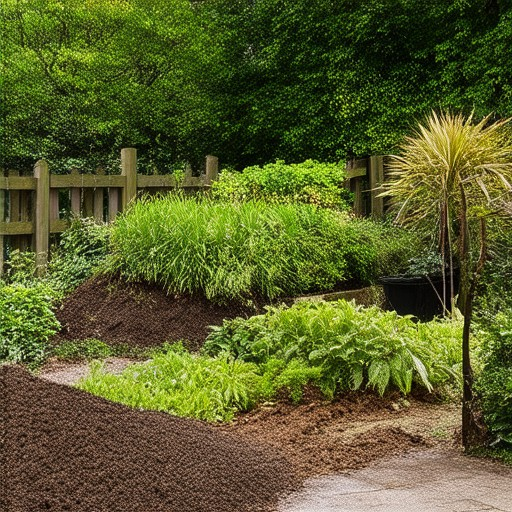
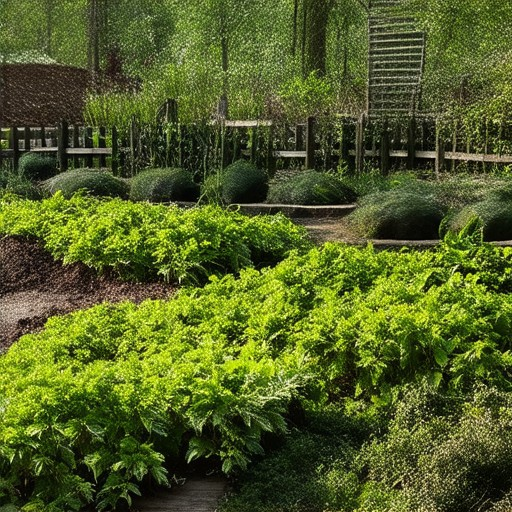
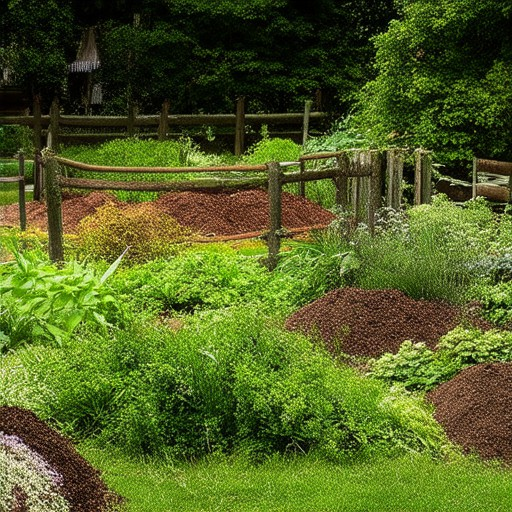
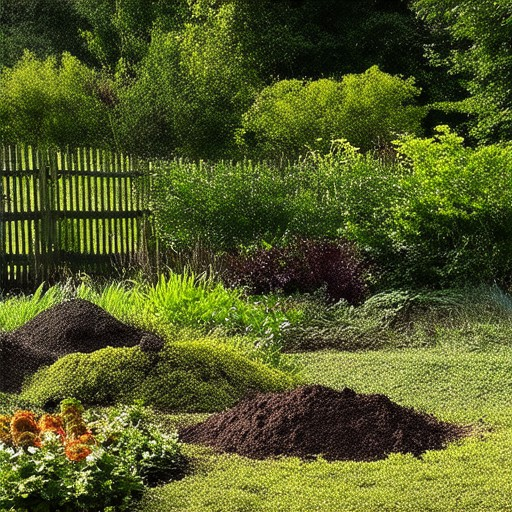

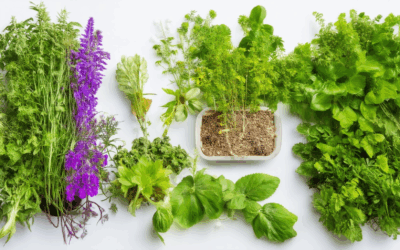
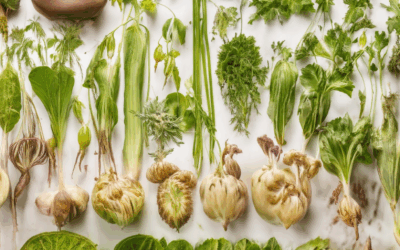
0 Comments